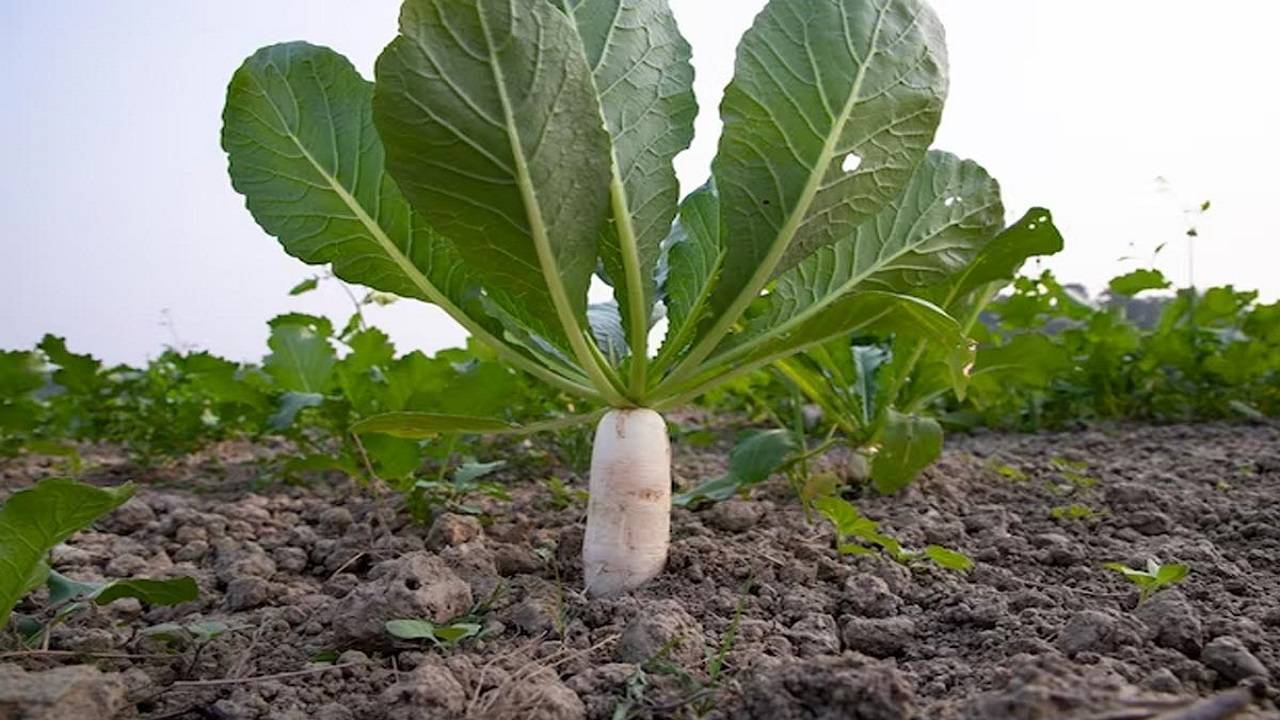
Radish is an edible root vegetable and belongs to the family Brassicaceae. It is a great source of dietary fibre, vitamin C, iron, calcium, vitamin B6, and magnesium. This edible root vegetable was domesticated in Asia prior to Roman times.
Soil and Land Preparation
Radish can be grown on all types of soils. However, it thrives best on light friable, sandy loam soil. Growing radishes on heavy or compact soils can produce rough, malformed roots. The ideal pH of soil for good growth is between 5.5 and 6.8. To prepare the land for sowing, the land should be prepared to fine tilth and leveled. Normally, the radishes are sown via line sowing and broadcasting.
Sunlight and Temperature
The ideal temperature to grow radishes is between 18 and 25 degrees Celsius. Radish grows well in cooler climates but requires good sunlight.
Seed rate and sowing
The best time to sow radish seeds is between June and July in hilly regions and in September in the plains. There should be a distance of 7.5 cm between plants and there should be at least 45 cm between two rows. The seeds should be sowed at a depth of 1.5 cm. For sowing seeds on an acre of land, at least 4 to 5 kg of seeds is sufficient.
Irrigation
Radish plants need regular watering to keep the soil moist. For the first 4 to 5 days, irrigate daily, then every 3 to 4 days depending on rainfall. In dry soil conditions, radish tends to bolt and taste bitter. However, overwatering can cause root rot and split.
Fertilizer
At the time of sowing, it is advised to apply a layer of well-decomposed cow dung to the soil along with nitrogen in the form of urea and phosphorous in the form of SSP. Most varieties of radishes are quick-growing; therefore, the soil should be rich in the required nutrients.
Weed Control
Overcrowding of radishes can cause the plant to bolt and not firm plump roots. Therefore, it is important to control the growth of weeds by weeding regularly. By controlling the weed population, the radish crop doesn’t have to compete for light and moisture. Weedicides such as Tok E-25 were applied as pre-emergence control for both monocots as well as dicot weeds in radish fields.
Common Pests and Diseases
A few pests can infest the radish crops. Slugs and snails can infest radish crops, especially in damp conditions. These pests eat away seedlings. Cabbage root fly larvae are another common pest that tunnels into the roots. This pest usually infests radishes that are slow-growing and stay in the ground for a longer period of time. Lastly, flea beetles are tiny insects that eat the leaves. However, they don’t destroy the actual crop or hinder its growth but cosmetic damage.
White rust is a common disease in the radish crop. It is caused by a fungus and leads to discolouration of leaves, blisters, and possible distortion or galls. The infected plant must be destroyed and in order to avoid this disease try to buy varieties that are resistant to the disease, practice crop rotation, and control the growth of weeds. Other than white rust, the radish crop is also inflicted by clubroot, a disease that causes swelling of the roots and can stunt growth. To treat this disease, the farmer must raise the soil’s pH and keep the field free of wild mustard.
Harvesting
Radish is harvested depending on its variety. Many varieties of radishes are ready to be harvested 30 to 60 days after sowing. Radishes are harvested by uprooting the plants. Once the vegetable is harvested its roots are washed so that the radish can be graded according to its size.
-
What's the best time to plant radishes?
Radish is a cool-season crop, preferring temperatures between 50-65°F (10-18°C). They can be planted in early spring or fall, depending on the climate. Experts suggest avoiding planting radishes during the hot summer months.
-
How long does it take to harvest radish?
Radish grows fast and depending on the variety, radishes can be harvested in just 25-35 days.
















